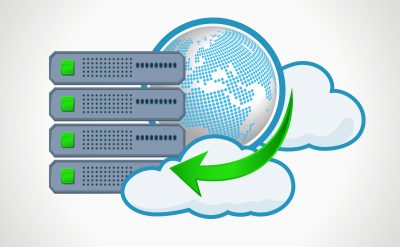Virtualization as a concept has existed since the 1960s, IBM Cambridge Scientific Center began the development of CP-40, and a virtual time bound operating system. It was not till 2000 cloud computing virtualization started to be incorporated for better utilization of the resources. Virtualization in the world of cloud computing is considered a scalable technology that will transform the IT industry.
Virtualization in cloud computing allows the user to run multiple applications and operating systems on the same system. For enterprises that tend to focus on better utilization of resources that will be leading to increases in efficiency and reduction in cost, the virtual machine offers an opportunity. Virtualization is a process of creating a better environment for the user with an existing server with a required set of programs. Using virtualization enterprises can provide various services through the same server for all users.
The virtual environment is an underlying platform that can support the combination of different operating systems, networks or application servers. Virtualization can also be used to create virtual storage devices and different hardware equipment’s. The most common example of Virtualization is a partition of your hard drive; though it’s a single hardware a user can access each of them differently without affecting the other drives.
What are the various types of virtualization and how do they work will help in understanding modern virtualization that affects the enterprises?
HARDWARE VIRTUALIZATION:
Server virtualization or hardware-assisted virtualization is also known as hardware virtualization. The underlying concept that is applied in the hardware virtualization is the creation of multiple virtual servers that run on a single physical server. The virtual server can function as an independent machine serving totally different purposes with the different operating system. Hardware virtualization is an abstract computing platform that also hides the physical characteristics of the system. Hypervisor acts as a support technology that handles the resources allotment for hardware virtualization.
The main advantage of the hardware virtualization is maximized utilization of the hardware and application uptime through servers.
HERE ARE SOME TYPES OF HARDWARE VIRTUALIZATION
1. Full Virtualization: The total underlying software is virtualized and doesn’t require any modifications to support the system.
2. Emulation Virtualization: The virtual machine simulates the hardware and becomes independent of the machine. The guest operating system doesn’t require any modifications to support the system.
3. Para-virtualization: The guest software runs on the isolated domain and the hardware is not simulated. The virtual machine offers a special API that can be used for modifying the guest operating system.
SOFTWARE VIRTUALIZATION:
Software virtualization revolves on the primary concept that develops multiple virtual environments on the server. Using the software virtualization an enterprise can create a complete environment and supported by the hardware. A user can run different operating systems using any one of the operating systems for the underlying technology support.
HERE ARE SUBTYPES OF THE SOFTWARE VIRTUALIZATION TO SUPPORT THE SYSTEM:
1. Application Virtualization: Hosting an individual application in a virtual environment that can be managed separately with the underlying native operating system.
2. Service Virtualization: A particular application can host on the server for specific purpose and service.
3. Operating System Virtualization: Hosting multiple operating systems on the native operating system.
MEMORY VIRTUALIZATION:
Physical Memory virtualization gives the user a benefit of utilizing the memory as a different block of data. Memory Virtualization also serves as continuous memory to serve a specific purpose. Many users have used the Memory Virtualization when they want to increase the RAM of the given system they use as a hard drive memory.
HERE ARE CERTAIN SUBTYPES OF MEMORY VIRTUALIZATION:
1. Operating System Level Control: Access to any type of the memory pool is done through an operating system.
2. Application-Level Control: Application control to access the memory pool.
NETWORK VIRTUALIZATION
Using the network virtualization, a user can utilize the multiple sub-networks with an underlying physical network. The virtual networks may be or may not communicate with each other. This helps in securing the network as the file movements can be restricted that allows better monitoring and identification of data usage. Using the network Virtualization a network admin can scale-up the physical environment to fulfill the requirements. It also offers the flexibility for the user as they can reuse different network without affecting the same.
SUBTYPES OF NETWORK VIRTUALIZATION:
1. External Network: Merging of multiple networks into a single platform or segregating a single network into multiple platforms.
2. Internal Network: In Internal Network a single system functions as a network.
DATA VIRTUALIZATION
Data Virtualization can help in manipulating the data that is being presented through the system. The abstract layer is completely independent of data structure and database system that helps in decreasing the data input and formatting the errors.
DESKTOP VIRTUALIZATION
Desktop virtualization is the most common type of virtualization that’s being used by regular IT employees. The user’s desktop is stored on the remote server, allowing the user to access the desktop from any location. Any person can remotely access the desktop from any network in the desired comfort zone of the network. The data transfer takes place through the secured protocols to prevent the data theft.
BENEFITS OF VIRTUALIZATION:
Virtualization will improve disaster recovery, software testing, and workload distribution. This reduces the hardware costs, saves energy and reducing the physical size of the data storage.
Virtualization improves the flexibility that enables the implementation of Infrastructure as a Service (IaaS) for better utilization of resources. Using the IaaS we can virtualize the hardware, software, servers, storage, and other infrastructure components. Using the virtualization a user can create a scalable model without over-loading the infrastructure. Creation of temporary or experimental virtual workload management can help us bring changes into management without affecting the current operations.
Effective management of resources for better productivity of the employees the enterprise can reduce the risk of data loss. Virtualization reduces the risk of data access, eliminating the need for an extra layer of security.
Virtualization is an imperative concept for the enterprises that seek to turnaround the resource utilization. With implementation, resource utilization and usage challenge have been simplified with virtual machines that can be scaled according to the requirements. To know more about the recent development of Virtualization, you can download our whitepapers.













